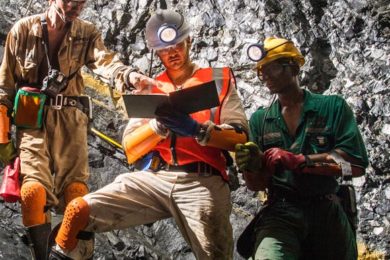Minerals Council CEO, Roger Baxter today presented at the Africa Down Under conference in Perth, Australia. He noted: “South Africa’s mining potential is huge. Even in the absence of a Greenfields exploration boom in South Africa, mining investment could almost double in the next four years if the country was to return to the top 25% of the most attractive mining investment destinations worldwide. This would result in another 200,000 jobs being created in the economy with 50,000 direct jobs created in mining alone; output, exports and procurement would increase substantially; as would direct and indirect taxes, and royalties paid to the fiscus; and the mining industry would be in a better position to increase its contribution towards infrastructure development and social projects in mining-affected communities. Given the industry’s commitment to real transformation, this would also materially advance the entire country’s transformation agenda.”
Baxter pointed out that in recent years South Africa had not realised its significant mining potential.
“In 2017, South Africa was rated 48th out of 91 mining jurisdictions in the Fraser Institute’s mining investment attractiveness rankings, despite being ranked 20th out of 91 for the country’s mineral potential assuming best policy and regulatory practice. South Africa’s mineral policies were ranked 81 out of 91 jurisdictions, and clearly there is a mismatch between the mineral potential and the policy scorecard. The consequences are evident with real net capital formation in mining declining by over 50% between 2013 and 2017. South Africa accounted for a poor 1% of total global exploration expenditure in 2017 compared to 14% for Canada and Australia respectively and 13% for the rest of Africa.”
The top issues that have been undermining the competitiveness of South Africa’s mining and exploration sectors are policy and regulatory uncertainty, costs rising at rates well above inflation, infrastructural constraints, restraints on exploration, a lack of trust between stakeholders and corruption.
Baxter outlined the key requirements that would enable the South African mining industry to realise its full potential which include:
• A shared Vision of the furture of the mining industry
• Ethical leadership and good governance
• Policy and regulatory certainty and competitiveness
• Available, efficient, cost competitive and reliable infrastructure
• Improving productivity and competitiveness
• Creating a “greenfields exploration boom”.
“Encouragingly we have seen a number of positive developments in the right direction. Since February, the President Ramaphosa administration has implemented measures to tackle corruption and promote investment. The appointment of the respected Mr Mantashe as the Minister of Mineral Resources, along with other cabinet changes in key economic portfolios and the implementation of new measures to improve governance and stabilise SOEs have been positive.
“Since his appointment, Minister Mantashe has worked hard to overcome the trust deficit between stakeholders, has engaged all parties in a frank and open manner, has withdrawn the problematic MPRDA Amendment Bill, proposed talks on individual commodities to address their specific challenges and allowed for detailed discussions to take place on a new Mining Charter which has had some positive outcomes such as recognising previous empowerment transactions. While some issues remain in respect of the new Mining Charter, we are hopeful of an outcome that promotes both transformation and investor confidence which will ultimately ensure the growth and viability of our sector. However, there is still much more work to be done in finalising a workable charter, in developing a competitiveness and growth strategy for the mining sector, to assist some commodities through the specific economic challenges they face and in building the sector for the future. What is important is that stakeholders are working together and the processes are certainly pointing in the right direction,” he concluded.










